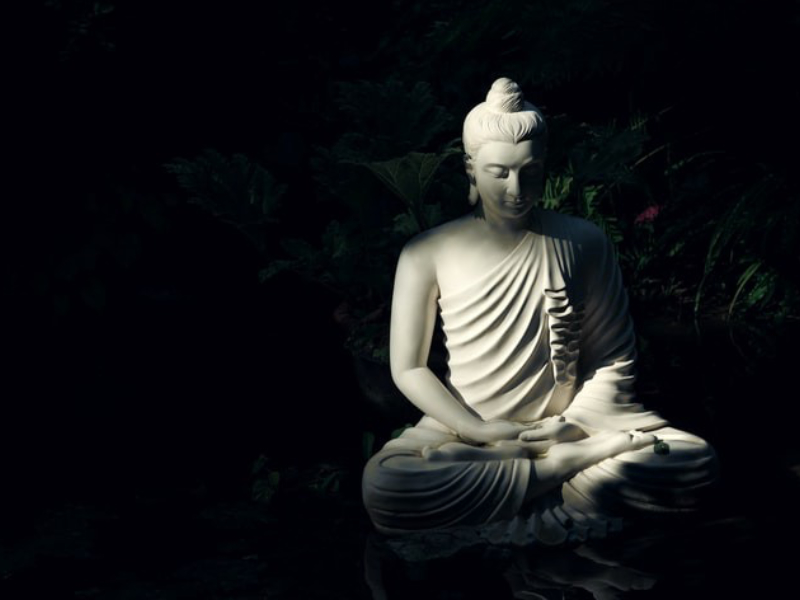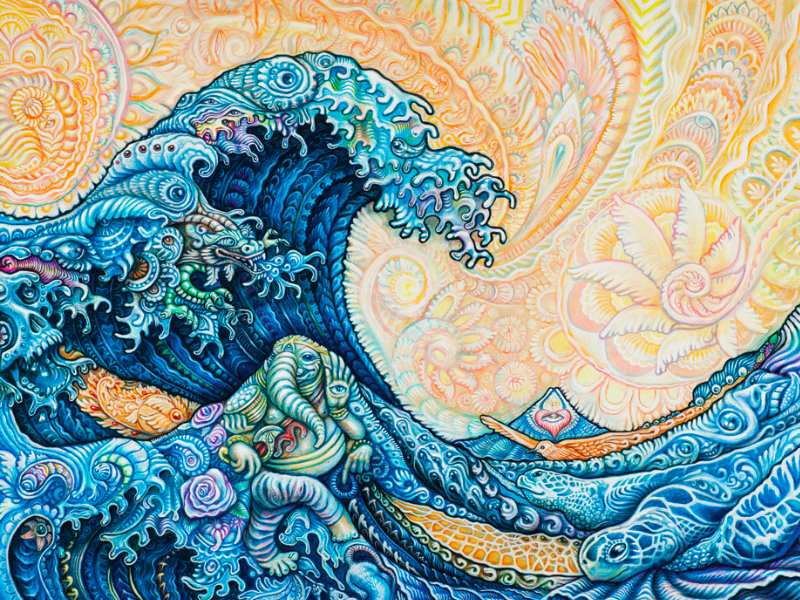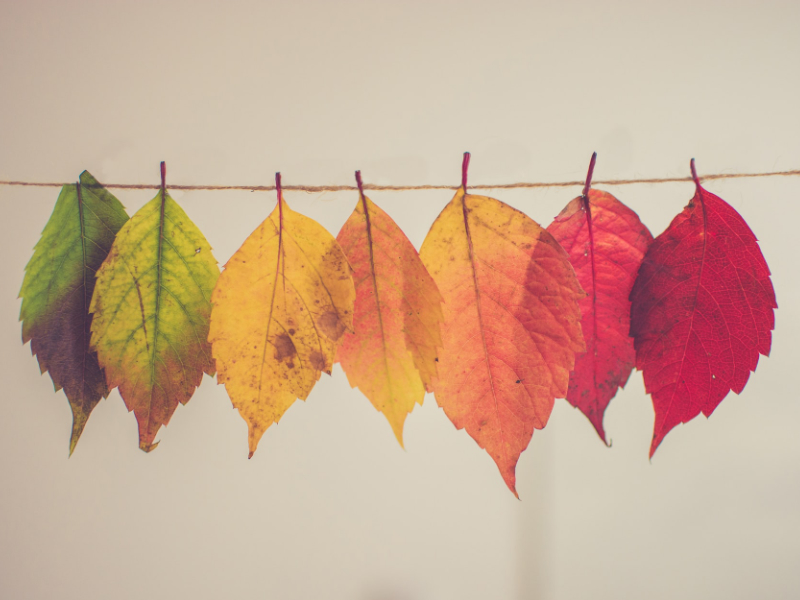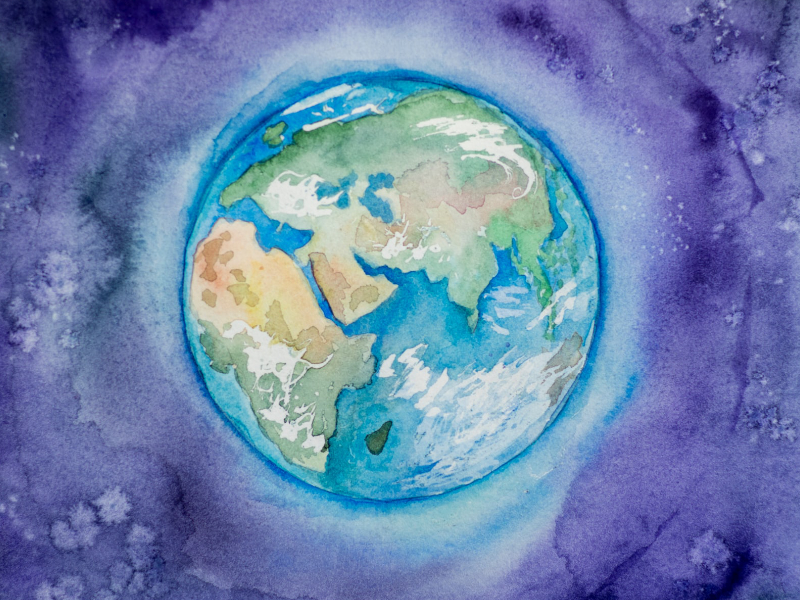Dog Zen
– Be Who Your Dog Believes You Are –
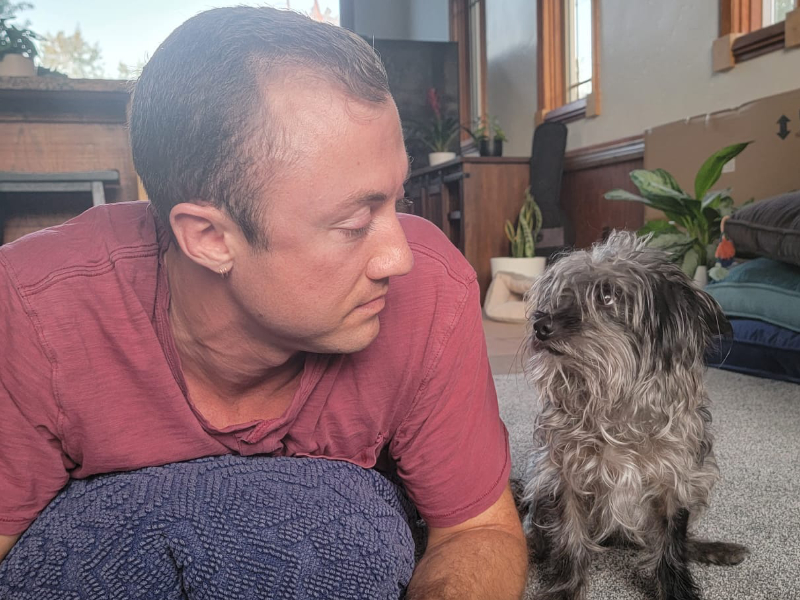
I JUST FINISHED A RETREAT WITH the marvelous and playful human Loch Kelly, who teaches mindfulness in such a unique, simple, and accessible way. His short “glimpse practices” allow you to quickly shift out of your small ego-center and into the already fully awake, alive, spacious, connected, and compassionate awareness that is simultaneously everywhere and nowhere, that is all things and no-thing.
Loch has been a wonderful teacher to me, and you can find his influence in many of my own practices. His effortless mindfulness approach takes the wisdom of ancient non-dual practices, like Dzogchen, and integrates them with modern neuroscience and psychology, making them more accessible to those of us who grew up in the West. And he brings such a good sense of humor and playfulness to the practice, which really lightens the mood and allows your heart to naturally soften and open.
Now, because some of you may not be familiar with the difference between non-dual practices and the more traditional practices like vipassana, which I tend to emphasize in my meditations, let me take some time to clarify the two approaches, which in the end really point to the same thing…and no-thing. Then, I will finish out the episode by introducing “Dog Zen,” a funny, clever, yet profound non-dual practice that Loch introduced me to.
NON-DUAL PRACTICES VS VIPASSANA
In spiritual life, we each come to meditation practice with some aim or goal, whether it’s enlightenment, freedom from suffering, peace, truth, understanding ourselves or our purpose, or whatever else it may be. But no matter our aim, we will each have to awaken to the Dharma, to the law and true nature of things, including the true nature of our own heart and mind, if we are to be successful in our endeavor.
Now, historically there are two approaches to awakening. There is sudden awakening, the non-dual approach, which includes practices like Dzogchen and Advaita; or there is gradual awakening, the ostensibly dualistic approach, which includes the more traditional practices out of India as well as vipassana, which comes from the Theravada, the oldest tradition in Buddhism.
Sudden Awakening | The Non-Dual Approach
With sudden awakening or the non-dualistic approach, the idea is to start with awakening. This seems like a no-brainer. I mean, why wouldn’t we start with awakening if that’s an option, right? Well sure, we can definitely start with awakening. And in fact many people have taken this route quite successfully. And Loch himself would argue that taking the goal as the path is the way to go. But how can we start with the very goal we’re trying to achieve or seek?
Well, that’s just it. The premise of the non-dualists is that there is nothing to achieve or seek. We are already awake. Non-dual awake awareness is already the true nature of mind. The problem is that our thoughts distract us from noticing our true nature. Attention collapses into thoughts and we end up identifying ourselves with them, like a wave who forgets it is seamlessly connected to and a part of the ocean. So, we just need someone to point us back to our true nature, to the non-dual awake awareness that is.
To clarify this, let me flush out this notion of non-duality a bit. First, I don’t mean oneness or emptiness. That is only one side of the coin. When I use non-duality, I mean the fullness of reality, which is both the relative and the ultimate together. It is recognizing and embodying both the wave and the ocean, the self and no-self. There is the world of people and things and, at the same, there is no-thing, the unborn and unformed, there is the ocean. Non-duality is the great paradox of being and non-being. So, the relative and ultimate can’t be separated. But they also can’t be reduced to one. They exist together simultaneously.
Awakening is the direct knowing and embodiment of these two levels at the same time. It is the inseparable intersection of compassion and wisdom, of the tender human heart and the unbounded mind.
“When I look inside and see that I am nothing, that is wisdom. When I look outside and see that I am everything, that is love. And between these two, my life flows.” — Sri Nisargadatta Maharaj
The practice, then, with this approach is to recognize your true nature in the beginning and to keep coming back to it again and again. Sam Harris, who is another proponent of this approach, says it’s like ringing a bell. You ring the bell and hear the sound — that is, you recognize your true nature — and once the sound fades, or you collapse into thought, you ring it again.
One way to do this is through self-inquiry. When you have a thought, you can look for who or what is having the thought. You can also apply this to any aspect of experience: Who is having this sensation, feeling, emotion, etc? The more you look for your “self,” the more illusive it will become. Some famous teachers of this approach include Ramana Maharshiand Nisargadatta Maharaj.
In Dzogchen, you receive ‘pointing out instructions’ by a teacher, which are meant to immediately cut through the illusion of ‘self.’ To shed light on this approach, I’ll share Loch’s encounter with Tulku Urgyen Rinpoche, who was considered one of the greatest Dzogchen masters of his time and who was also a teacher of Sam Harris.
Loch, while studying psychology and spirituality in grad school, traveled to Sri Lanka, India, and Nepal to study meditation and healing practices. And after studying vipassana in Sri Lanka, he went to India, where he heard the Dalai Lama give a talk about non-dual approaches in Tibetan Buddhism. In the talk, the Dalai Lama explained that the love and freedom we all seek is already equally within each of us, and there are methods for recognizing this awakening suddenly.
Moved by his teaching, Loch enthusiastically raised his hand and asked the Dalai Lama to point him to a teacher. The Dalai Lama suggested a teacher named Tulku Urgyen Rinpoche in Nepal. So, away Loch went to meet him at his hermitage on the slopes of the Kathmandu Valley.
When Loch first received instructions from Tulku Urgyen Rinpoche, it took only a few minutes. As Loch puts it:
“I became as calm and clear as after my ten-day deliberate mindfulness meditation retreats in Sri Lanka. But it was also a different type of calm. I felt alert, compassionate, embodied, and energetically connected to everyone and everything. My emotions were more accessible and spacious, and I related to them directly in a loving way. I began to laugh as tears of gratitude flowed down my face. The pervasive feeling of anxiety, self-centeredness, and fear, which had always felt like a normal part of who I was, dissolved. What was here instead was a profound sense of well-being, unity, joy, and gratitude. This full expression lasted through the day and had faded a bit when I awoke the next morning, but it remained in the background, and, more importantly, something fundamental had changed in me.”
So, what were these magic instructions? Well, Tulku Urgyen asked the students to place awareness in the corner of the room. Not to focus their attention on the corner of the room from the small ego-center in their head, but to be aware fromthe corner of the room. Then, he asked the students to look back from the corner of the room to where they were sitting and to keep moving awareness through their ‘selves’, through the looker, to the space that had their backs, until they realized the awareness that was already wide open, awake, and free.
If you’re confused by these instructions or don’t know what the hell he’s talking about, no worries. What I love about Loch’s glimpse practices is that there are many doors he provides that lead to this open, awake, and embodied awareness. And some seem to work better for others and even work better at different times, depending on our present circumstances. So, I highly encourage you to check out Loch’s work. (He’s currently developing an app, which he tells me should be ready by May 1, 2023. So, I’ll provide the link here once he releases it.)
Sam Harris also has some wonderful meditations that take this approach on his app Waking Up. I recommend Sam’s work for those who have an intellectual or philosophical leaning. He is among the clearest thinkers and communicators I know. And, though I tend to emphasize the Theravada, I too provide free meditations that incorporate the non-dual approach. (You can check out my meditations here. And eventually I too will develop an app. Stay tuned.)
This non-dual approach isn’t for everyone, though. You may find it confusing and even frustrating. Luckily, there’s another way — the dualistic or goal-oriented approach.
Gradual Awakening | The “Dualistic” Approach
Though non-dual awake awareness is our true nature, when we have been conditioned to live on the relative level, as we all must in order to relate with one another and the world around us, vipassana may be the more accessible starting point, since you don’t need to have had any insight into true nature of consciousness.
This approach comes from the Satipaṭṭhāna Sutta, or the discourse on the establishments of mindfulness, from which all traditions of mindfulness stem. Here, the Buddha provides us with what he calls “the direct path to awakening.”
“This is the direct path for the purification of beings, for the overcoming of sorrow and lamentation, of suffering and grief,…for the attainment of Nibbana, namely, the Four Establishments of Mindfulness.” — The Buddha
Here, we develop energy, concentration, mindfulness, equanimity, and insight or understanding in a systematic way. We become established in the four pillars or foundations of mindfulness: 1) the Body; 2) Feelings; 3) Mind-States and Emotions; and 4) Dhammas — or the laws, processes, and faculties of mind and body along with the various views or frameworks through which we can understand them.
“Here, one lives contemplating the body in the body, ardent, clearly knowing it and mindful of it, having overcome desire and ill-will; he lives contemplating the feelings in the feelings, ardent, clearly knowing them and mindful of them, having overcome desire and ill-will; he lives contemplating consciousness in consciousness, ardent, clearly knowing it and mindful of it, having overcome desire and ill-will; he lives contemplating mental objects in mental objects, ardent, clearly knowing them and mindful of them, having overcome desire and ill-will.” — The Buddha
As you can see, this approach takes a lot more work than the non-dual approach. It can be a bit steep and intimidating. But I tend to emphasize it because, not only will it lead to awakening if you put in the work, but it will also allow you to cultivate and develop a number of sustainable skills and faculties that are incredibly useful in every day life. The more you put into it, the more it will carve you into a remarkably sharp, strong, aware, peaceful, composed, and loving person.
With the fourth foundation, for example, when establishing mindfulness of dhammas, you learn to cultivate and balance what are called the seven factors of awakening — mindfulness, investigation, energy, joy, tranquility, concentration, and equanimity. And also in this fourth foundation is the Noble Eightfold Path, which cultivates things like nobility of speech and action. So, there really is a lot of utility in the breadth and depth of training along this path from the Theravada.
I will acknowledge, though, that it can be misleading for some people since it creates confusion at the outset by framing the goal in a way that makes you go looking for something outside of you. And many people do in fact get caught in this kind of endless striving, when in fact what they seek is already here, right under their nose. Consciousness is already free of self. So, yes, it can seem contradictory.
One Dharma Approach | Skillful Means
That is why, rather than taking a side, I encourage what Joseph Goldstein has coined the One Dharma approach. Because it can be easy to get tied up or identified with one tradition or another, because we naturally like to belong to a group, why not become a global citizen. If we can remember to keep in mind our aim, to free ourselves from suffering, then we can look at every tradition and the tools they provide as a skillful means for Liberation!
What works for you, right now? Cool. Use it. And put the others back in the tool bag. You’ll never know when they might end up serving you.
DOG ZEN | “AWAKE AWARENESS, STAY…”
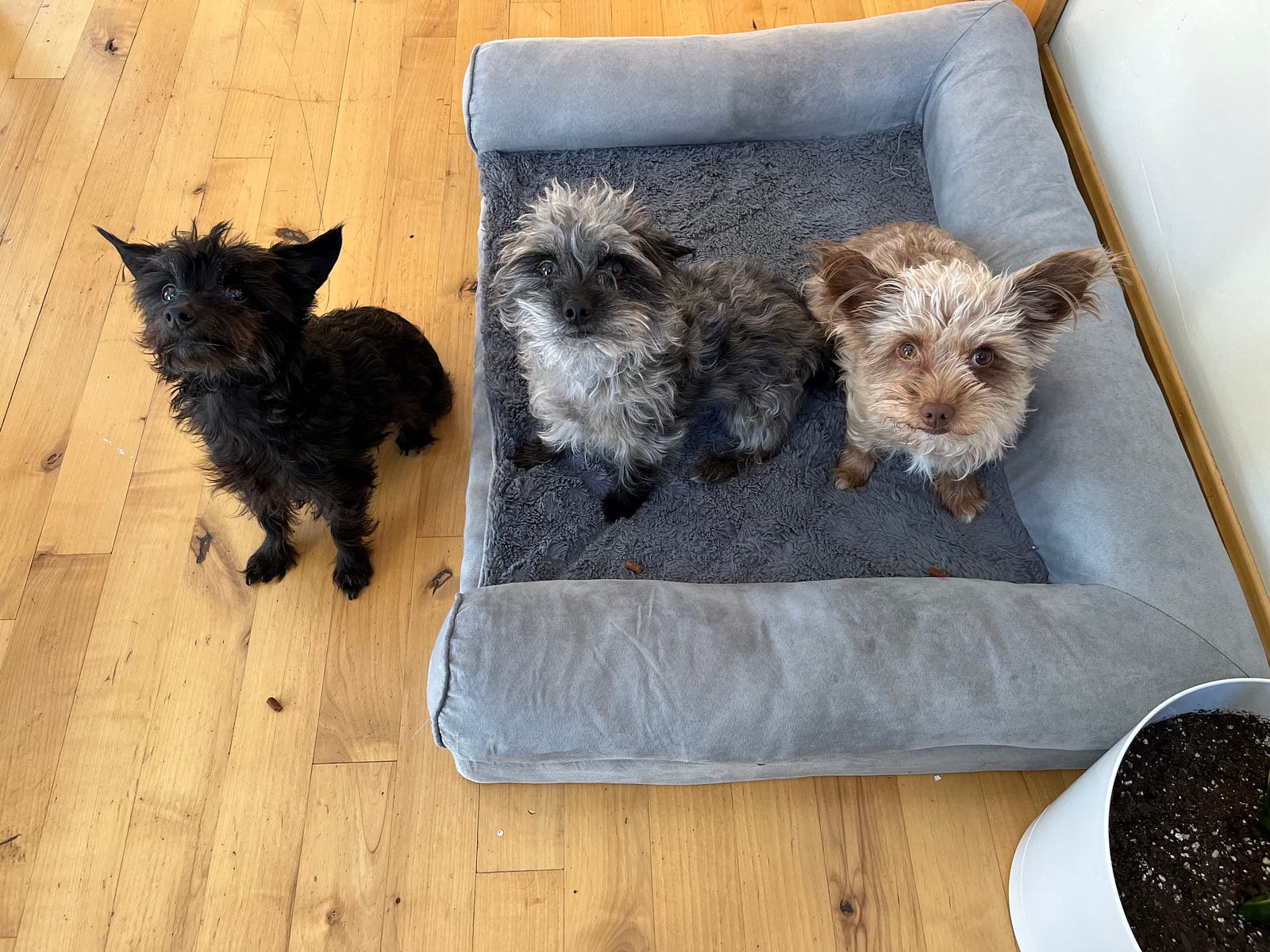
Okay, now let’s do some dog zen. Let’s be everything our dog believes us to be, which is everything, right? They tend to know us better than we do. They have such faith in us. They can feel that infinite source of being within us, the Great Love. And at the same time, they are so in tune with our ever so tender and vulnerable human heart. They know when we are hurt. They know when we are in pain. And they also know exactly what we need to heal—the boundless and unconditional love that can hold our hurt and our pain, the undying love that take on those emotions which are too big for our small ego to hold on its own, the tender and supportive hand on our back.
Once we’re with that love and all the parts of ourself that hurt and need to be seen, then, just like we do with our dogs, we train it to stay…stay…stay…
You’re a remarkable human. Take care of yourself. Remember, you’re not alone. You have Love at your back.
Until next time,
More Articles
“The Art of Bare Attention”
Today we’re going to talk about the ancient Buddhist practice vipassana, or insight meditation. Now, just to be clear, this is an entirely secular practice. It doesn’t require you to adopt any dogmatic beliefs…
“The Faceless Seer”
How do you hold your love? Do you hold her from stillness, with nowhere to go, with nothing to do? How do you hold your love? Do you hold her with acceptance, with open hands and arms, with unabashed…
“Everything Changes”
It’s no secret everything changes. Your experience this morning isn’t your experience now. Yet how many of us act like we really understand this? How often do we grasp onto the illusion of things…
“The Divine Connection”
How do you hold your love? Do you hold her from stillness, with nowhere to go, with nothing to do? How do you hold your love? Do you hold her with acceptance, with open hands and arms, with unabashed…

